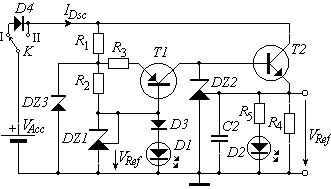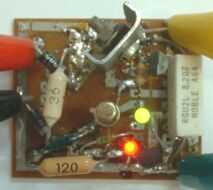 |
 |
| |
|
University Transilvania of Brasov, Faculty of Electrical Engineering and Computer Science,
Department of Electronics and Computers & Department of Automatics
Extended abstract
This paper presents the main characteristics and parameters of the Nickel Cadmium (NiCd) and Nickel-Metal Hydride (NiMH) rechargeable batteries. Based on these, testing principles and two relatively simple and inexpensive circuits are presented. These original circuits were designed to test and recondition battery packages with 3 or 4 NiMH or NiCd cells that are used for mobile phones. The battery capacity is tested by sinking a constant current from the battery and measuring the time. At the end of the discharging, the circuits automatically adjust the current in order to avoid the cell reversal. The first circuit (figure 1) uses the discharged battery as power supply and the other one, a bit complex and more precise, uses an external power supply. These circuits were practically realised (the experimental model of the first circuit is presented in figure 2) and successful used for testing and recondition NiCd and NiMH batteries.
 |
 |
| |
|
Some examples of battery reconditioning can be relevant. After more than 2 years of normal use in mobile phones of 3 cells 0.6 Ah NiMH batteries (without any special maintenance in that period) utilizing the previous circuit the capacity was increased from 0.4Ah to 0.52Ah (67% to 87% of the initial capacity) for one battery and from 0,35Ah to 0.56 Ah (58% to 93%) for the second one.